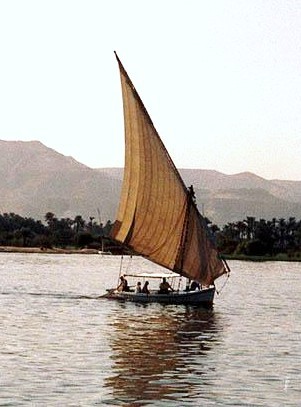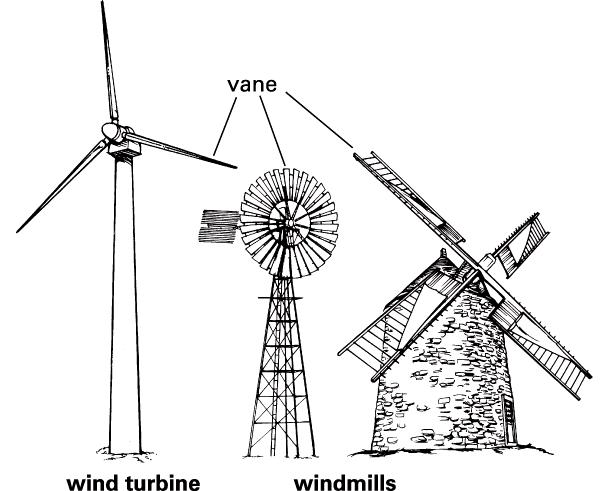
Alternative Energy – Windmills
consequences – последствия renewable – возобновляемый conventional – обычный subtle – трудно уловимый awareness – знание curative – целебный to grind grain – перемалывать зерно supercede – заменять, вытеснять promising – многообещающий |
capacity – мощность kWh – киловатт-час annually – ежегодно displace – заменять avoid – избегать affordable – доступный compete – соревноваться, соперничать utility services – коммунальные услуги at a premium of – стоимостью |
A lternative
energy refers to energy sources that have no undesired consequences
such for example fossil fuels or nuclear energy. Alternative energy
sources are renewable. They all have lower carbon emissions, compared
to conventional energy sources. These include Biomass Energy, Wind
Energy, Solar Energy, Geothermal Energy, Hydroelectric Energy
sources. Combined with the use of recycling, the use of alternative
energies will help ensure man's survival into the 21st century and
beyond.
lternative
energy refers to energy sources that have no undesired consequences
such for example fossil fuels or nuclear energy. Alternative energy
sources are renewable. They all have lower carbon emissions, compared
to conventional energy sources. These include Biomass Energy, Wind
Energy, Solar Energy, Geothermal Energy, Hydroelectric Energy
sources. Combined with the use of recycling, the use of alternative
energies will help ensure man's survival into the 21st century and
beyond.
Alternative energy can also refers to the different and subtle energies of the Universe. The awareness and study of these energies, which are similar to electrical energies can result in amazing curative and healing energies.
T
 he
first known use of wind power was in 5000 BC when people used sails
to navigate the Nile River.
Persians had already been using windmills for 400 years by 900 AD in
order to pump water and grind grain.
he
first known use of wind power was in 5000 BC when people used sails
to navigate the Nile River.
Persians had already been using windmills for 400 years by 900 AD in
order to pump water and grind grain.
The first large windmill to produce electricity was the "American multi-blade design," built in 1888. Its 12-kilowatt capabilities were later superceded by modern 70-100 kilowatt wind turbines.
Today, people are realizing that wind power "is one of the most promising new energy sources" that can serve as an alternative to fossil fuel-generated electricity. As of 1999, global wind energy capacity topped 10,000 megawatts, which is approximately 16 billion kilowatt-hours of electricity. That's enough to serve over 5 cities the size of Miami, according to the American Wind Energy Association.
"With today's technology, wind energy could provide 20% of America's electricity (or about the amount nuclear power provides) with turbines installed on less than 1% of its land area.
" The
3 billion kWh of electricity produced by America's wind machines
annually displace the energy equivalent of 6.4 million barrels of oil
and avoid 1.67 million tons of carbon emissions, as well as sulfur
and nitrogen oxide emissions that cause smog and acid rain." In
other words, "more wind power means less smog, acid rain, and
greenhouse gas emissions."
The
3 billion kWh of electricity produced by America's wind machines
annually displace the energy equivalent of 6.4 million barrels of oil
and avoid 1.67 million tons of carbon emissions, as well as sulfur
and nitrogen oxide emissions that cause smog and acid rain." In
other words, "more wind power means less smog, acid rain, and
greenhouse gas emissions."
Windmills may have been around for almost 1500 years, but it was not imagined that wind power would become affordable enough to compete with fossil fuels. In fact, many utility services around the world offer wind-generated electricity at a premium of 2 to 3 cents per kWh. If a household used wind power for 25% of its needs, it would spend only $4 or $5 dollars per month for it and the price is still dropping. Compare this to 4.8 to 5.5 cents per kWh for coal or 11.1 to 14.5 cents per kWh for nuclear power. Wind energy is therefore "cheaper than any other new electric generation except natural gas, which emits one pound of greenhouse gases for every kilowatt-hour of electricity it generates."
Tidal power
bulges – повышение current – течение harness – использовать barrage – плотина dam – дамба take advantage of – воспользоваться predictable – предсказуемый random – случайный, бессистемный weather patterns – погодные условия run out – истощиться |
convert – превращать, трансформировать tank – бензобак exchange – обмен salinity – солёность sediment – осадок, ил mortality rate – уровень смертности startup costs – стоимость установки, запуска maintenance costs – эксплуатационные расходы back out – отказываться от участия profit returns – прибыль |
Tides are basically big bulges of water created by the gravity of the sun and the moon. These bulges move around our planet, back and forth, creating currents and causing water levels to rise and drop. Usually it takes about twelve hours for water to rise and twelve hours to fall.
We can take advantage of this rise/fall phenomenon by harnessing renewable energy from it. By installing barrages (small dams), we can generate electricity from passing water by using turbines. Because the rise/fall phenomenon is always there, tidal power is a clean, non-polluting, renewable source of energy.
